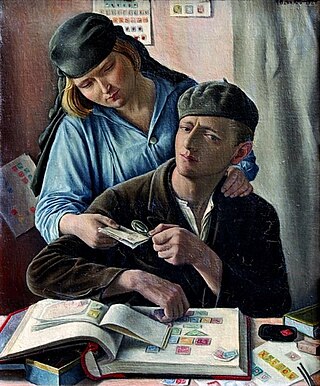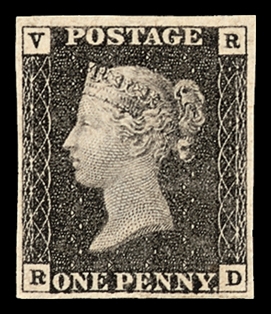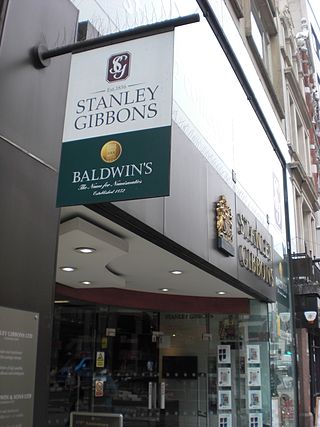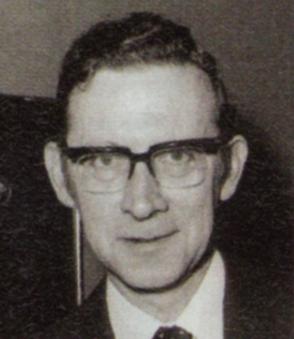
Stamp collecting is the collecting of postage stamps and related objects. It is an area of philately, which is the study of stamps. It has been one of the world's most popular hobbies since the late nineteenth century with the rapid growth of the postal service, as a stream of new stamps was produced by countries that sought to advertise their distinctiveness through their stamps.

The Penny Red was a British postage stamp, issued in 1841. It succeeded the Penny Black and continued as the main type of postage stamp in the United Kingdom of Great Britain and Ireland until 1879, with only minor changes to the design during that time. The colour was changed from black to red because of difficulty in seeing a cancellation mark on the Penny Black; a black cancellation mark was readily visible on a Penny Red.

The VR official was one of three postage stamps introduced by the United Kingdom of Great Britain and Ireland in May 1840 for the pre-payment of postage. While the Penny Black and the Two Pence Blue were for use by the general public, as were the Mulready envelopes and letter sheets, the VR official was for use on official mail. In appearance the VR Official was the same as the issued Penny Black except that the Maltese crosses in the top corners were removed and replaced by the letters V and R, hence its common name.

The Stanley Gibbons Group plc is a company quoted on the London Stock Exchange specialising in the retailing of collectable postage stamps and similar products. The group is incorporated in London. The company is a major stamp dealer and philatelic publisher. The company's philatelic subsidiary, Stanley Gibbons Limited, had a royal warrant of appointment from Queen Elizabeth II.

The British Guiana 1c magenta is regarded by many philatelists as the world's most famous rare stamp. It was issued in limited numbers in British Guiana in 1856, and only one specimen is now known to exist. It is the only major postage stamp ever issued in the United Kingdom or British Commonwealth that is not represented in Britain's Royal Philatelic Collection.

The postage and revenue stamps of the United Kingdom issued in 1887 are known as the "Jubilee" issue because they were issued during the year of the Golden Jubilee of Queen Victoria to the throne in 1837. They continued in use throughout the remainder of Victoria's reign, and many of the designs were reused in the stamps of Edward VII. The Jubilee issue includes the first British stamps to be printed in two colours.

Two postage stamps were issued to commemorate the British Empire Exhibition, a colonial exhibition held in Wembley Park, Wembley, in 1924. Two denominations, a 1d scarlet and 1½d brown, were produced. When the Exhibition reopened in 1925, they were re-issued with the same design, but the dates were changed to read "1925" instead of "1924".

The Machin series of postage stamps was the main definitive stamp series in the United Kingdom for most of the reign of Elizabeth II, from 1967 until her death in 2022. Introduced on 5 June 1967, it was the second series of her reign, replacing the Wilding series. The last issue was on 4 April 2022, four months before the Queen's death on 8 September.
Country definitives, previously known as regionals, are the postage stamps issued for each of the home nations of the United Kingdom and the Channel Islands and the Isle of Man.

A Presentation Pack typically contains a full set of a new stamp issue, produced for philatelists and stamp collectors. It normally comprises a folded card containing detailed notes about the stamps, a card with clear strips for holding the actual stamps, all held within a clear sleeve. The packs are usually sold at a price a little above the stamps' face value.
The United Kingdom, known in philatelic circles as "Great Britain", released many commemorative stamps in the 1970s.
The United Kingdom, known in philatelic circles as Great Britain, released many commemorative stamps in the 1980s.
Jeffery Edward Matthews was a British artist, specialising in postage stamp design from 1959 to 2007. He conceived the Machin definitive series' colour palette in the mid-1980s.

Sir Edward Denny Bacon was a British philatelist who helped with the enlargement and mounting of collections possessed by rich collectors of his time and became the curator of the Royal Philatelic Collection between 1913 and 1938.

James Negus was a British philatelist and book editor.

The Roll of Distinguished Philatelists (RDP) is a philatelic award of international scale, created by the Philatelic Congress of Great Britain in 1921. The Roll consists of five pieces of parchment to which the signatories add their names.

Gibbons Stamp Monthly (GSM) is a British philatelic magazine which can trace its roots back to 1890. GSM is published by the famous stamps and collectables firm of Stanley Gibbons and each issue includes updates to their various catalogues.

Stampex is a British stamp show held at the Business Design Centre (BDC) in Islington, London. The show is organised by the Philatelic Traders Society (PTS) through their company The Philatelic Traders’ Society Limited company and has been running for many years.

Anthony Hugh Mostyn Jefferies, MBE, is a British philatelist, the former editor of Gibbons Stamp Monthly, and the current editor of the Stanley Gibbons stamp catalogue.
The Phillips Gold Medal is awarded to the person who, in the opinion of the judges, has contributed the most to British postage stamp design in recent years. The award was established by the distinguished British philatelist Reginald M. Phillips. The medal is three inches wide and made of 22 carat gold. It is retained by the winner.















